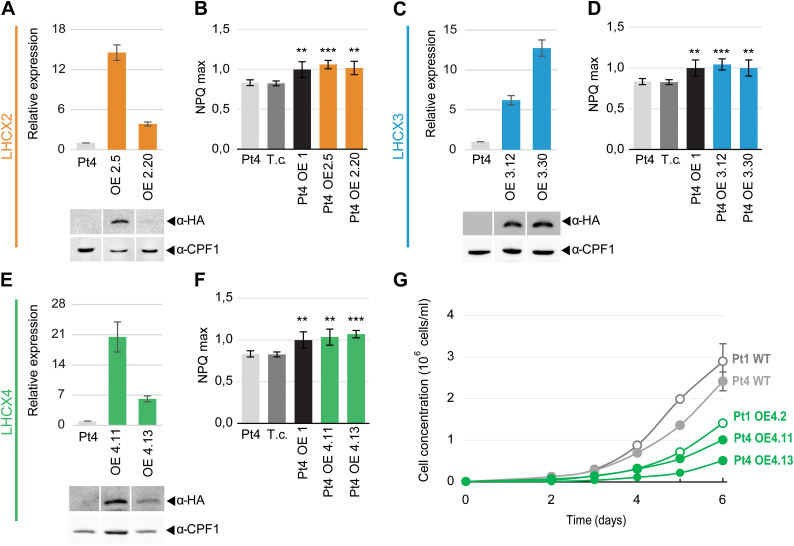Fig. 4.
Phaeodactylum tricornutum Pt4 ecotype lines overexpressing the LHCX genes. (A), (C), (E) LHCX transcript (upper panels) and protein (lower panels) analyses in the Pt4 wild type and transgenic strains overexpressing HA-tagged LHCX2 (A), LHCX3 (C), or LHCX4 (E). Transcript abundance was measured by qRT-PCR using RPS as the reference gene and normalized to the wild type expression value. Tagged proteins were detected by immunoblot using an anti-HA antibody, and an anti-CPF1 antibody as loading control. Bands are taken from the same blots but from non-adjacent lanes. (B), (D), (F) NPQ max capacity in the Pt4 wild type, in a transgenic strain expressing the vector for antibiotic resistance (transformation control, T.c.), and in independent transgenic lines overexpressing LHCX1 (OE1), LHCX2 (OE2), LHCX3 (OE3), and LHCX4 (OE4) genes. Asterisks indicate the results of two-tailed Student t-tests: **p<0.01; ***p<0.001. (G) Growth curves of Pt4 and Pt1 wild-type strains and Pt4 and Pt1 transgenic lines overexpressing the LHCX4 (OE4) gene, grown in 12L/12D cycles (50 µmol m−2 s−1). In all the experiments, n≥3, and bars represent ±SD. (This figure is available in colour at JXB online).

